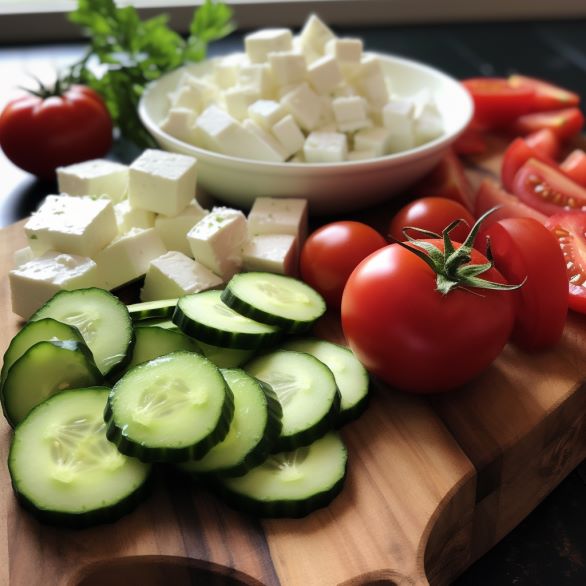Greek Salads The Quintessential Taste of Greece: Exploring the Variety of Salads
Introduction:
Greek cuisine is renowned for its vivid flavors, fresh ingredients, and inherent health benefits, represented most iconically by the array of Greek salads available across the nation. But Greek salads extend far beyond the internationally recognized ‘Horiatiki,’ showcasing an assortment of vegetables, cheeses, and dressings that are as diverse as the regions of Greece from which they originate. In this article, we embark on a culinary tour to explore the different types of Greek salads, understanding their historical roots, traditional ingredients, and the variations that have developed over time.
The Heart of Greek Salads: The Ingredients
The Foundation – Vegetables & Greens
In exploring the rich tapestry of Greek salads, it’s vital to recognize the cornerstones that define them. Bright, sun-ripened tomatoes are ubiquitous, their juiciness a perfect foil for the crispness of cucumbers. Red onions add sharpness, while green bell peppers bring a mild bite. Each vegetable is a fresh burst of the Mediterranean palate, contributing to a salad that is as visually vibrant as it is tasty.
Seasonal leafy greens also play a fundamental role. From the bitter tang of chicory to the softness of arugula, greens add depth and contrast to the crispness of the raw vegetables. The variety used often reflects the salad’s regional origins, incorporating local flora and the cultural tastes of that area.

The Accents – Cheeses, Olives & Dressing
Cheese is the protein-rich heart of many Greek salads. Feta is the most internationally recognized, ubiquitous with its creamy crumble and briny tang. Regional varieties like the creamy, less salty myzithra, offer subtle variations in flavor and texture that locals prize.
Olives, from the fleshy, deep-purple Kalamata to the smaller, firmer Thasos, add richness and a touch of luxury to the salad. They embody the savory spirit of Greek agriculture, encapsulating the age-old tradition of olive cultivation.
The dressing is typically a straightforward affair but pivotal in uniting the salad’s elements. Extra virgin olive oil serves as the liquid gold foundation, often brightened with fresh lemon juice or red wine vinegar and seasoned with salt, oregano, and occasionally garlic. This simple concoction allows the quality of the fresh ingredients to shine without overpowering their inherent flavors.
The Classic Greek Salads
Horiatiki – The Village Salad
Start with the most famous Greek salad, often referred to as the ‘Greek Salad’ abroad. Describe the traditional composition of the Horiatiki salad, which typically doesn’t include lettuce and features large chunks of vegetables, olives, and a slab of Feta cheese on top.
Dakos – The Cretan Staple
Dakos or ‘koukouvayia’ is a beloved Cretan salad featuring the signature barley rusk – a hard, twice-baked bread known for its ability to soften deliciously under a blanket of chopped, ripe tomatoes and crumbled myzithra cheese. A final flourish of olive oil, capers, and olives makes Dakos a hearty dish often enjoyed as a light meal on its own, embodying the island’s spirit with every bite.
Lesser-Known Greek Salads
The Islands’ Delights – Cypriot, Santorini, and Rhodes Salads
Discuss the variations of Greek salads found on different islands that include distinctive island ingredients like capers from Santorini or purslane in Rhodes salads.
The Mainland’s Pride- Politiki and Marouli Salads
Explore salads unique to mainland Greece, such as Politiki, originating from the region near Istanbul (formerly Constantinople), which includes cabbage or the simple Marouli (lettuce salad) served with spring onions and dill.
Contemporary Twists on Classic Salads
Modern Takes & Health Trends
Highlight how modern Greek chefs are reinterpreting classic salads by incorporating contemporary trends like superfoods, new dressing emulsions, or unexpected ingredients, while still staying true to the core principles of Greek salad-making.
Conclusion – A Salad for Every Occasion
Wrap up with a reflection on the importance of salads in Greek dining, how they complement main dishes, and their role in the country’s diet. Encourage readers to experiment with their own Greek salad variations and to appreciate the wide array of salads that Greece has to offer.
